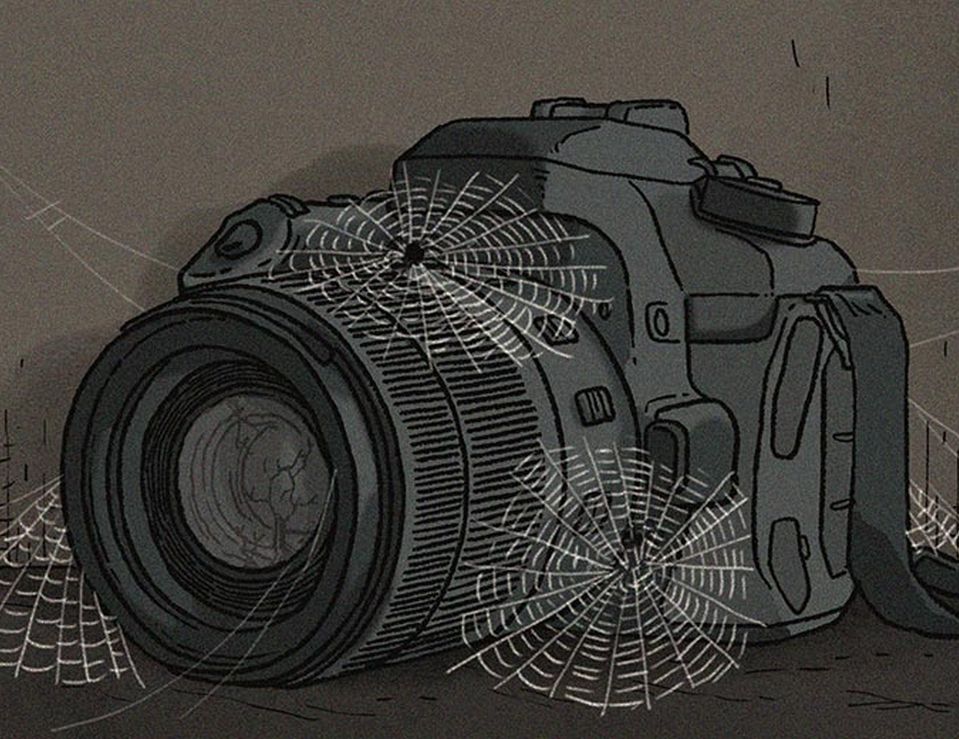
A vanishing tribe: India's newsrooms are emptying of photojournalists
Photojournalists and video journalists are bearing the brunt of media layoffs, mainly because of the advent of photo news agencies and cellphones.
By Anusuya Som
On June 2, 1994, Rajiv Gupta was at the Delhi airport, waiting for then President Shankar Dayal Sharma to return from a trip to Bulgaria and Romania. When the aircraft touched down, Sharma peered out of the window to see how many people had gathered to receive him. This is the photograph that Gupta captured. Hindustan Times published the picture on its front page, and received almost 1,000 letters to the editor about it.
It’s a reminder of what Gupta, a photojournalist for 32 years, describes as the “past glory” of photojournalists, a time when they truly made an impact.
Twenty-five years on, much has changed. In the digital age of journalism, the reporter is a veritable one-man army, using the mobile phone to shoot pictures and videos, and broadcast live while reporting from the ground. This saves media houses money, but it makes a victim — the photojournalist. In recent years, layoffs have become common in the Indian media — and some of the first casualties are photojournalists and video journalists.
In the past year alone, the news channel Tiranga TV, and the websites News Central 24x7 and DailyO have closed down while the newspaper DNA has shut down its print editions. According to a source at News18, the network laid off 80 video journalists in 2010. A few months ago, it laid off another 60-70 journalists, the majority of them photojournalists and video journalists. Industry insiders told Newslaundry this issue has been in the making for years now.
But exactly how bad is the state of photojournalism in India right now? Newslaundry contacted several veteran photojournalists to find out. Here are their stories.
Rajiv Gupta
Gupta, who is currently chief visual director at News18, started his career in 1987 with The Patriot. According to him, the decline in the number of photojournalists today stems from the emergence of news agencies like PTI and UNI, which distribute photographs to news organisations at cheap rates.
“In our time, there were no photo agencies, their work was limited to text copies,” says Gupta. “Later, as they moved into photojournalism, PTI provided Associated Press photos and UNI did the same with Reuters. They began charging newspapers about ₹30,000-50,000 a month for pictures from around the world, not just India. This killed the profession of photojournalism.”
Subhash Roy
Roy, a freelance photojournalist with 20 years of experience working for publications such as Hindustan Times, The Times of India and The Indian Express, says, “News organisations now don’t look for exclusivity, they are fine with agency photos at a cheap rate. They don’t understand that news agencies circulate the same pictures to all media houses, so they’re ready to compromise on quality.”
Vijay Pandey
Considered one of the most skilled photojournalists of his time, Pandey started his career in 2001 in Meerut with the Hindi newspaper Amar Ujala. In 2007, he joined Tehelka as the photo editor. It was “the golden period” of photojournalism, he says.
“At that time, a photojournalist could pitch a story. If the story was good enough, it would get approved. I hardly see that anymore,” Pandey says. “But then again, that was the time of ground reports. Today, every media house is dependent on international organisations for a good picture.”
In his time, he recalls, Tehelka had five photojournalists on its staff. Today, it has none.
In 2015, Pandey joined Outlook, part of a team of five or six photojournalists, now reduced to three. He says he resigned in 2018 because Outlook stopped commissioning ground reports from its photojournalists. “We had no other option,” he points out. “The organisation stopped doing field reports so we had nothing to do. Therefore, I had to leave. All I could go was go to Jantar Mantar and cover protests.”
Pandey subsequently joined Wise but quit soon after for the same reason. He currently works as a freelancer. “There are no jobs, anything available now [in India] pays only ₹30,000-50,000. Working as a freelancer for an international brand pays me $300-600 per month for two or three stories.”
Naresh Sharma
Currently a freelance photojournalist, Sharma’s first job was with The Indian Express in 1997. He says mobile phone cameras cannot capture photos the way a digital single-lens camera can. He points out that reporters often capture mobile phone photos in automatic mode since they have very little knowledge of the technical aspects of photography — that’s not their job, after all.
Sharma worked at The Times of India from 2006 to 2009. There, he recalls, his editor would call every story a “product”. He was then moved to Metro Now, a joint venture between The Times of India and Hindustan Times, but was told to resign in 2009 when Metro Now shut down.
In 2010, he moved to Firstpost as a freelance photojournalist before joining full-time four years later. He says he wasn’t getting enough work, despite drawing a salary. “For a photojournalist, salary is not everything. Hence, I resigned.”
Story first appeared in NewsLaundry.com on 23rd Oct 2019
STORY BY

Mumbai Press Club
Editor
Article posted on 01/11/2019
- Share This Story On:




